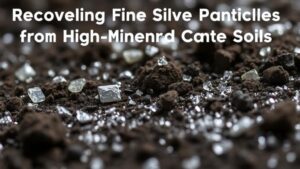How to Read a Stream to Find Gold Deposits for Beginners
How to Read a Stream to Find Gold Deposits for Beginners
Understanding how to read streams for gold deposits is a critical skill for both novice and seasoned prospectors. It combines knowledge of geology, hydrology, and environmental conditions. This article will delve into the fundamental concepts necessary for identifying potential gold-bearing areas within a streambed.
The Basics of Gold Deposits
Gold is often found in association with quartz veins or alluvial deposits. Alluvial gold originates from the erosion of rocks containing gold and is transported by water. Over time, gold settles in low-velocity water areas due to its high density.
- Primary deposits: Where gold is originally found, usually in quartz veins.
- Secondary deposits: Resulting from erosion and carried downstream, often found in rivers and streams.
The Importance of Stream Features
A stream’s morphology significantly influences where gold can accumulate. By examining various stream features, prospectors can pinpoint likely spots for gold deposition.
- Bedrock: Areas where the stream is flowing over solid rock can trap gold.
- V-Shaped Valleys: These often funnel water and can create natural traps for heavier materials.
- Inside Bends: Slower-moving water on the inside curve tends to deposit heavier materials, including gold.
- Sand Bars: These can act as sediment traps where gold may settle.
Reading the Flow of Water
Understanding water flow is pivotal in identifying gold locations. Water velocity changes depending on various factors including channel shape and size. Rapid water can carry lighter particles, while slower water allows heavier materials to settle.
- Fast-moving sections: Usually contain less gold due to the ability to transport minerals downstream.
- Slow-moving sections: More favorable for gold deposits as they allow particles to settle.
Identifying Indicator Minerals
Gold is often found alongside certain indicator minerals that can lead you to larger deposits. By familiarizing yourself with these, you can increase your chances of finding gold. Some common indicator minerals include:
- Black Sand: A mix of magnetite and hematite that can suggest the presence of gold.
- Quartz: The presence of quartz fragments might indicate that gold is nearby.
Tools for Beginners
Prospecting for gold requires specific tools to efficiently and effectively search a stream. Here are some essential tools for beginners:
- Panning Kit: A basic essential for separating gold from sediment.
- Sluice Box: Useful for processing larger amounts of material more quickly.
- Gold Metal Detector: Can help locate gold nuggets underwater or in areas where panning may be less effective.
Real-World Applications
Several amateur prospectors have turned their hobbies into success stories. For example, in Californias Sierra Nevada region, many enthusiasts use these techniques alongside public chasing laws to find gold deposits. By focusing on slow-moving bends and using tools like pans and sluice boxes, they successfully recover small amounts of gold.
Conclusion: Actionable Takeaways
To successfully read a stream for gold deposits, beginners should focus on understanding stream features, water flow, and identifying indicator minerals. The use of appropriate tools will significantly enhance your chances of making a discovery. As a final note, always ensure you adhere to local regulations and environmental guidelines when prospecting.



